News
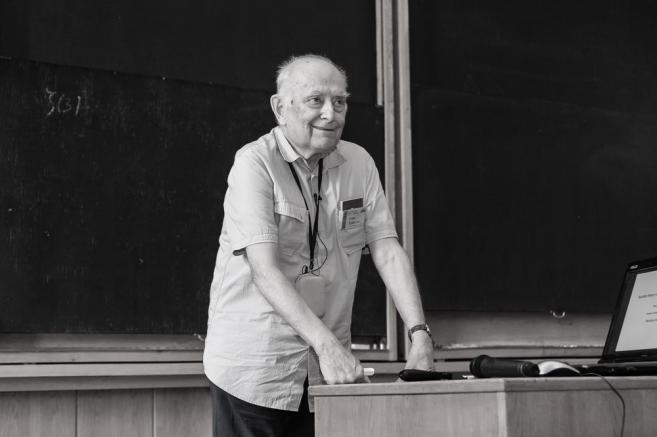 February 14, 2025:
February 14, 2025:
It is with the deepest sadness that we have learned from Vladimir Dobrev about the passing of Ivan Todorov, a great scientist whose academic achievements have left an indelible mark on the field of Theoretical and Mathematical Physics. Internationally renowned for his fundamental contributions to the axiomatic foundations of quantum field theory, conformal field theories, and group-theoretical methods, Ivan Todorov was also a remarkable individual, characterized by his warmth and intellectual generosity.
Born on October 26, 1933, in Sofia, Bulgaria, Ivan Todorov emerged from a family of literary scholars who played significant roles in Bulgarian academic life. Following his graduation from the University of Sofia in 1956, he embarked on a productive period at the Joint Institute for Nuclear Research in Dubna, where he earned his Ph.D. (1960) and Doctor of Sciences (1963) degrees. Returning to Bulgaria in 1971, he joined the Institute for Nuclear Research and Nuclear Energy, and in 1974, he was elected a full member of the Bulgarian Academy of Sciences.
Ivan Todorov stood as one of Bulgaria's most eminent theoretical physicists, fostering an internationally recognized school of thought that extended its influence across the globe.
A towering figure in mathematical physics, Ivan Todorov's international stature was evident. After completing his doctoral work under the supervision of Nikolai Bogoliubov in 1963, he became a pivotal force in the development of the axiomatic approach to quantum field theory. His collaborative endeavors spanned a constellation of esteemed theoretical and mathematical physicists and mathematicians, including V. Bargmann, N.N. Bogoliubov, D. Buchholz, M. Flato, V. Kac, G. Mack, L. Michel, C. Itzykson, R. Stora, and M. Dubois-Violette.
Ivan Todorov was a frequent and long-standing visitor at the Institute for Advanced Study, IHES, CERN, various scientific institutions in Germany, the Schrödinger Institute in Vienna, and numerous international scientific gatherings. At these venues, he engaged constructively with leading scientific figures such as D. Faddeev, J. Fröhlich, and A. Wightman.
A prolific and creative researcher, Ivan Todorov authored over 350 publications and 11 books, and he was a charismatic speaker, regularly invited to scientific conferences and related symposia.c
Among his most notable achievements are his contributions to conformal quantum field theories in arbitrary dimensions. His comprehensive classification and description of the unitary representations of the conformal group are meticulously documented in two widely referenced monographs co-authored with his collaborators. His research on constructive quantum field theories, particularly his book on the axiomatic approach, has profoundly influenced contemporary developments in the field. Furthermore, his early work on the analytic properties of higher-loop Feynman diagrams has found significant applications in perturbative quantum field theory.
On a personal level, Ivan Todorov was a warm and unassuming individual, whose vast culture and keen intellectual curiosity impressed all who had the privilege of knowing him. His profound command of modern mathematics enabled him to remain consistently abreast of emerging trends and ideas in theoretical physics. His characteristic polite and engaging manner of discussing physics, marked by insightful comments and suggestions, was truly unique.
Ivan was a cherished friend of the Corfu scientific activities, gracing the events with his presence and contributions on several occasions. We had the pleasure of admiring his scientific acumen and gentle, warm personality in Corfu, Varna, CERN, Athens, and elsewhere, and we developed a lasting friendship with him and his wife, Boryana, for which we are deeply grateful.
We join the chorus of voices expressing profound sorrow at the loss of such a remarkable individual. The memory of Ivan Todorov will remain with us always. We extend our deepest condolences to Boryana and the rest of his family, his colleagues and students at the Institute for Nuclear Research and Nuclear Energy in Sofia, and to all those across the world who carry forward his spirit.
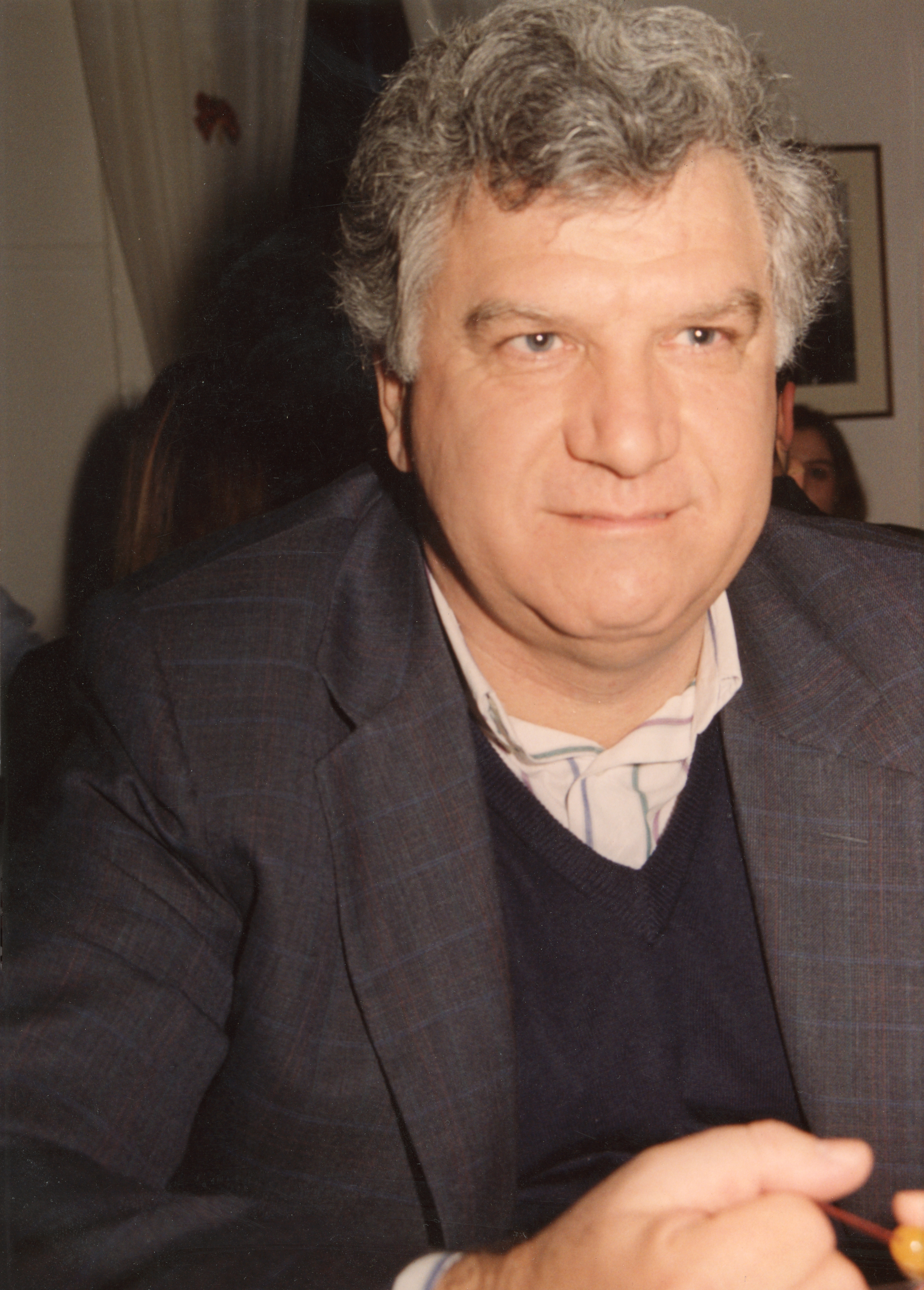
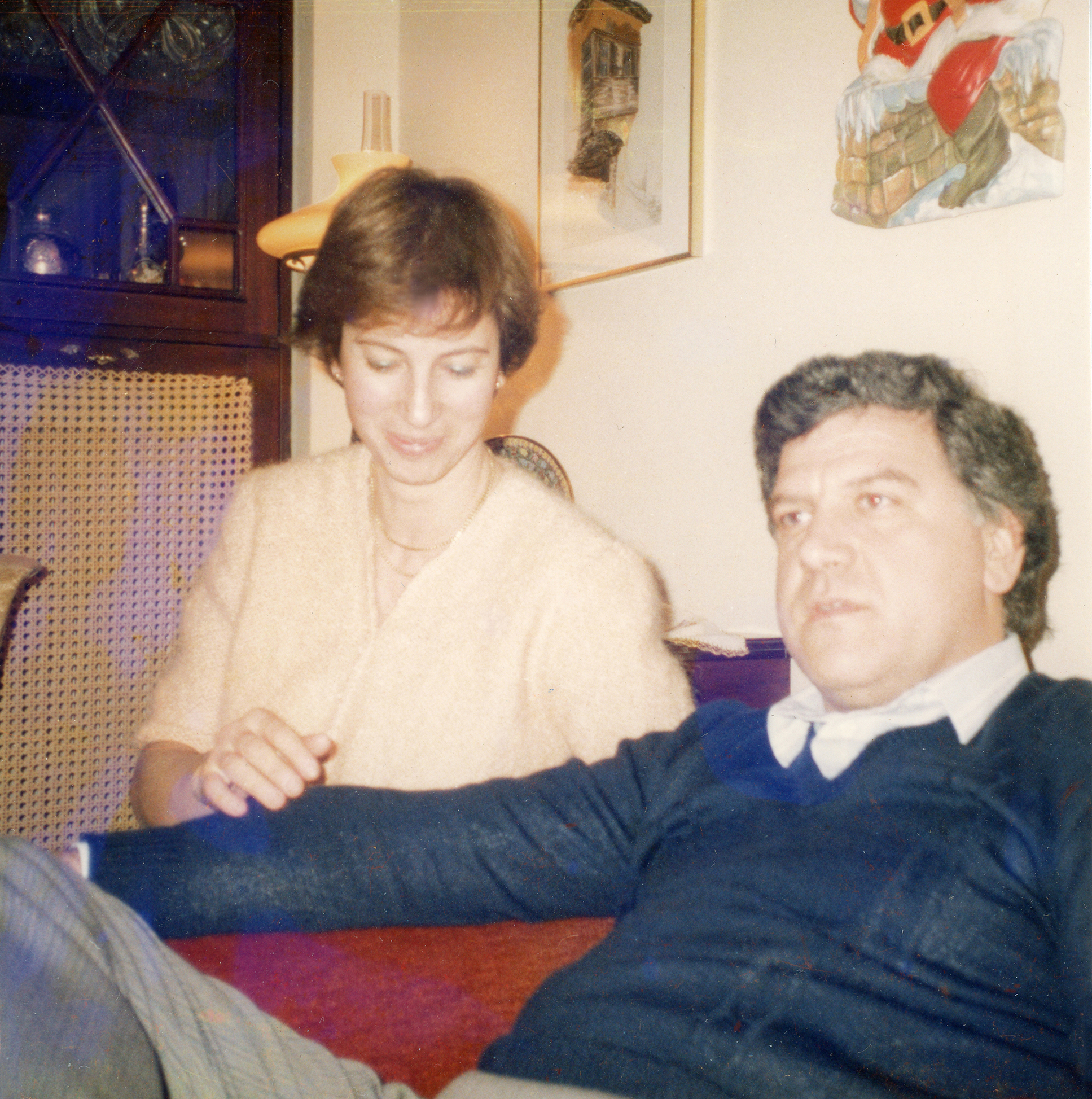 March 2, 2024:
March 2, 2024:
We are deeply shocked by the terrible news that our beloved friend George Lazaridis is not with us anymore. George Lazaridis was an internationally renowned and highly respected scientific figure, and he will be always remembered by the international scientific community, among others, for his seminal results in topological defects, grand unification, supersymmetry and inflationary models. In addition will be remembered for ever by his students as a charismatic lecturer and more generally by his friends and colleagues as an outstanding scientific personality internationally, who contributed in a very significant way to the most important problems discussed in the Elementary Particle Physics and Cosmology communities.
George was born in 1946 and obtained his Physics degree from the Aristotle University of Thessaloniki (AUTH) in 1969. He subsequently conducted his doctoral research under the esteemed guidance of Abdus Salam at Imperial College and received his Ph.D. in 1973, along with the prestigious Diploma of Membership of Imperial College (DIC). After completing his military service, George Lazaridis held research positions at the University of Ioannina, the University of Hamburg, CERN, and the University of Rockefeller, where he was promoted to Assistant Professor. In 1982, he was elected Professor in the Physics Division of the Faculty of Engineering at AUTH. Notably, he served as Scientific Associate in the Theory Division of CERN during two periods (1/1991–7/1991 and 3/1996–7/1997), maintaining close ties with the organization throughout his career. George Lazaridis became Emeritus Professor at AUTH in 2013, remaining an active and highly regarded researcher until his passing.
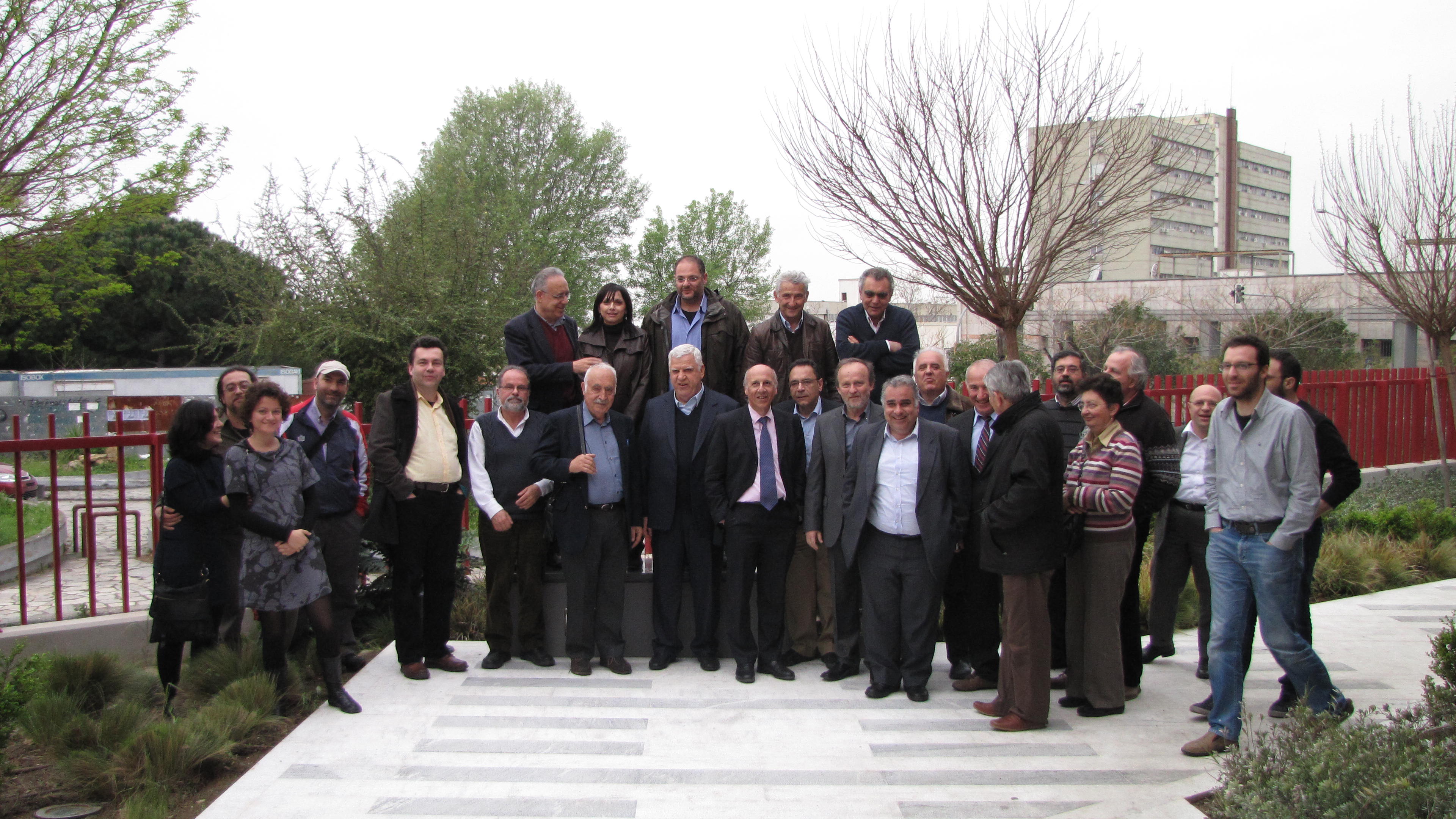 George Lazaridis' involvement in various research networks within the
European Union (EU) as scientist-in-charge for the Greek node showcased his
dedication to collaborative scientific endeavors. He also led and participated
in numerous research programs throughout his career. Moreover, George Lazaridis
maintained fruitful collaborations with notable scientists, in particular with
Qaisar Shafi, with whom he collaborated during all his scientific life and with
whom shared many scientific successes. His collaborators also included younger
researchers who have since gained recognition and some of them became famous
dominating their respective fields, such as Balasubramanian Ananthanarayan,
Roberto de Austri, Kostas Dimopoulos, Gia Dvali, Nick Ganoulis, Mario Gomez,
Shaaban Khalil, George Leontaris, Costas Pallis, Costas Panagiotakopoulos, Nick
Vlachos, and Christof Wetterich. George Lazaridis also supervised or
co-supervised numerous doctoral students and engaged in collaborations with
researchers from international institutions, including the University of
Delaware (USA), Lecce (Italy), Lausanne (Switzerland), Cairo (Egypt),
and Lancaster (UK).
George Lazaridis' involvement in various research networks within the
European Union (EU) as scientist-in-charge for the Greek node showcased his
dedication to collaborative scientific endeavors. He also led and participated
in numerous research programs throughout his career. Moreover, George Lazaridis
maintained fruitful collaborations with notable scientists, in particular with
Qaisar Shafi, with whom he collaborated during all his scientific life and with
whom shared many scientific successes. His collaborators also included younger
researchers who have since gained recognition and some of them became famous
dominating their respective fields, such as Balasubramanian Ananthanarayan,
Roberto de Austri, Kostas Dimopoulos, Gia Dvali, Nick Ganoulis, Mario Gomez,
Shaaban Khalil, George Leontaris, Costas Pallis, Costas Panagiotakopoulos, Nick
Vlachos, and Christof Wetterich. George Lazaridis also supervised or
co-supervised numerous doctoral students and engaged in collaborations with
researchers from international institutions, including the University of
Delaware (USA), Lecce (Italy), Lausanne (Switzerland), Cairo (Egypt),
and Lancaster (UK).
George Lazaridis' impressive body of work includes numerous well-cited publications, amassing approximately 9000 citations and an h-index of 43. He actively participated in approximately 40 international conferences, even serving as an organizer for two of them. George Lazaridis' research primarily focused on Astroparticle Physics (cold dark matter (CDM) candidates, Baryogenessis, Inflation, Topological defects), supersymmetric Grand Unified Theories (GUTs), Fermion Masses, and Superstring Theories. His significant contributions in these fields can be summarized as follows:
- 1. As early as 1982, in a seminal paper published in Phys. Lett. 113B (1982) 237 by Kibble, Lazarides and Shafi found out that the SO(10) Grand Unified Theory contains a Z_2 symmetry. The importance of this discovery partially is due to the fact that in supersymmetric SO(10), this Z_2 symmetry can be considered as matter parity. It prevents rapid proton decay and also ensures the stability of the candidate dark matter particle. In non-supersymmetric SO(10) this Z_2 symmetry has been exploited in order to provide plausible dark matter candidates. The unbroken Z_2 symmetry also yields topologically stable cosmic strings that could be detected using the next generation of gravity wave detectors. Further, in the paper published in Phys. Rev. D 26 (1982) 435 they propose a new class of composite topological structures ("walls bounded by strings") in SO(10). They identified an important discrete parity, usually referred to in the literature as D-parity, which continues playing an important role in model building.
- 2. In collaboration with Christof Wetterich, famous now and younger scientist at the time, George Lazaridis wrote the paper "Proton Life-time and Fermion Masses in an SO(10) Model" published in Nucl. Phys. B181 (1981) 287 where they introduced the idea of type II seesaw mechanism in grand unified theories. This contribution has gained wide recognition in the field.
- 3. The paper "Axion Models with no Domain Wall Problem", published in Physics Letters in 1982 by George Lazaridis and Qaisar Shafi, marked a significant breakthrough in resolving the axion domain wall problem through a novel mechanism. Notably, this mechanism does not rely on inflation, and its implementation in realistic axion models leads to experimentally testable predictions.
- 4. In a pioneering paper on non-thermal leptogenesis, published in Phys. Lett. B 258 (1991) 305, Lazarides and Shafi proposed a successful explanation of the observed baryon asymmetry in the universe.
- 5. In a series of papers, some in collaboration with Costas Panagiotakopoulos, George Lazaridis and Qaisar Shafi proposed and developed the scenario of thermal inflation for the first time. Key features of thermal inflation were outlined in these early papers, preceding the coinage of the term "thermal inflation" in 1994. Notable publications include those in Physical Review Letters (1986 and 1987) and Nuclear Physics (1993).
- 6. The exploration of t-b-Yukawa unification in realistic grand unified theories (GUTs) based on supersymmetric SO(10) was first proposed by Lazarides and Shafi, in collaboration with Ananthanarayan in their seminal work titled "Top Mass Prediction from Supersymmetric GUTs", published in Phys. Rev. D 44 (1991) 1613, and has since gained significant recognition.
- 7. It is imperative to acknowledge the substantial contributions made by Lazarides and Shafi to GUTs and cosmology through a series of influential papers, including "The Fate of Primordial Magnetic Monopoles", published in Phys. Lett. 94B (1980) 87. In this work, they demonstrated the existence of topologically stable monopoles in SO(10), which carry two units of Dirac magnetic charge and can be lighter compared to monopoles with a single quantum of Dirac charge.
- 8. Lazaridis and his collaborators also made significant contributions to string model building. In collaboration with Panagiotakopoulos, motivated by the fact that the compactification of heterotic E8 × E8 symmetry leads to discrete symmetries, they elucidated how a discrete (gauge) symmetry can effectively behave as a "continuous" symmetry. They suggested that this behavior could potentially resolve the strong CP problem. Furthermore, in the context of string theory, Lazaridis, alongside Ganoulis, presented a comprehensive classification of discrete symmetries of the first three-generation superstring model derived from Calabi-Yau compactification. This work was published in Nucl. Phys. B 323 (1989) 374, under the title "Classification of Three-Generation Superstring Models According to Their Discrete Symmetries".
- 9. In their paper titled "Superconducting Strings in Axion Models", published in Phys. Lett. 151B (1985) 123, Lazaridis and Shafi demonstrated that axion models lead to superconducting strings, and the string-wall system exhibits unique properties. It is noteworthy that E. Witten utilized this paper in his work to establish that the heterotic string is superconducting.
- 10. In their paper published in Nucl. Phys. B 638 (2002) 165-185, Lazaridis and his collaborators presented a compelling observation regarding "Yukawa quasi-unification in supersymmetric grand unified theories".
- 11. Lazaridis and his collaborators conducted an extensive and comprehensive study of the curvaton scenario in inflationary cosmology, which has significant implications for realistic model building. Their findings were published in Phys. Rev. D 68 (2003) 123515.
- 12. It is indeed remarkable that even during his prolonged illness, George Lazaridis remained highly productive and intellectually engaged. His continued contributions are evident in his recent papers with collaborators published in JHEP 05 (2023) 119 and Phys. Rev. D 108 (2023) 9, 095041. Additionally, just a few weeks prior to his passing, George published another significant work with collaborators, which is currently available as an e-print: 2402.03128 hep-ph.
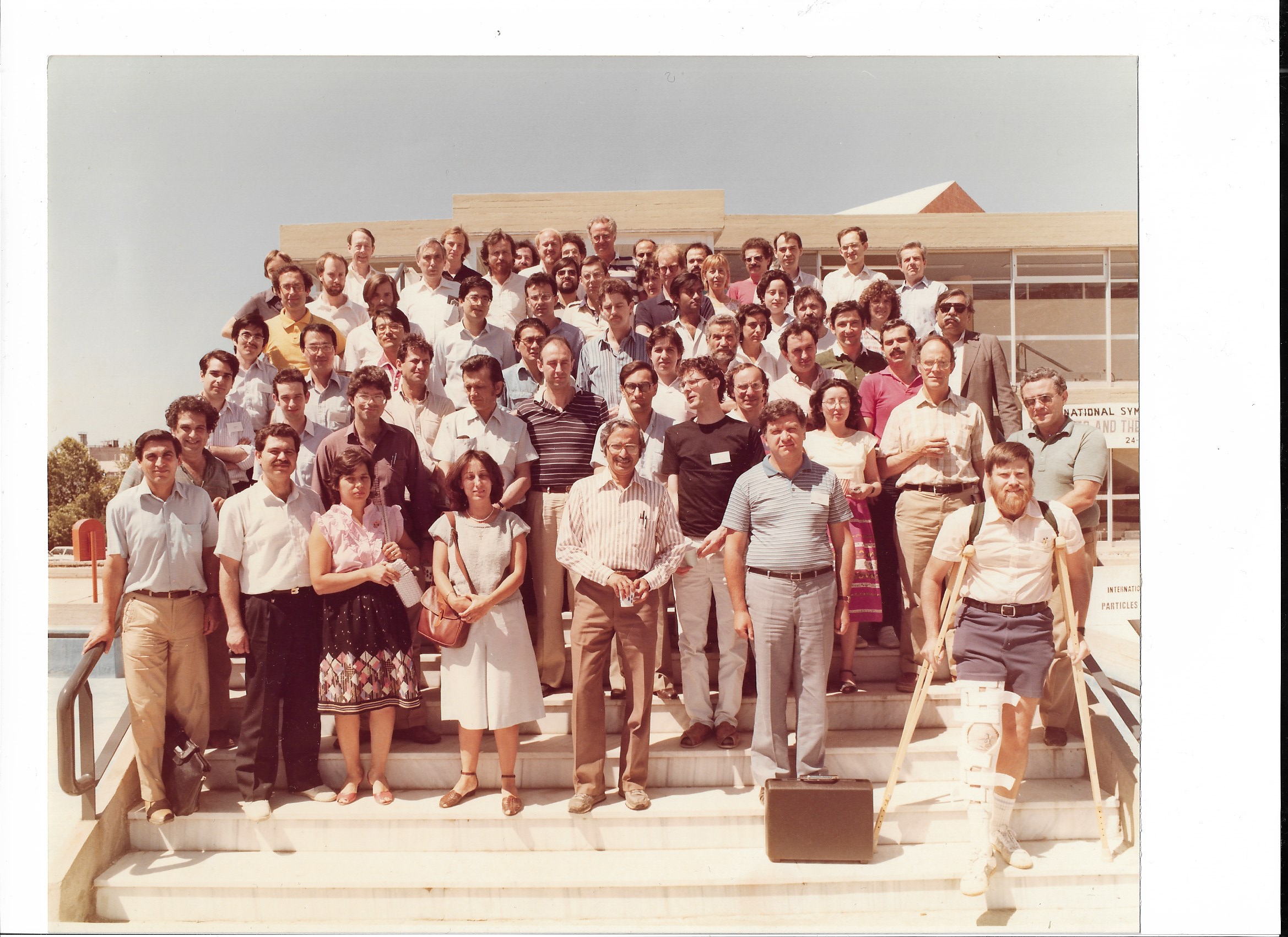
George Lazaridis left a very rich and esteemed scientific legacy to the younger generation of scientists on the way on the scientific work should be done.
Emphasis should be given on the substantial contribution of George Lazarides in
establishing the University of Thessaloniki as a globally recognized center of
scientific excellence, attracting outstanding international collaborators,
postdoctoral researchers, and doctoral students.
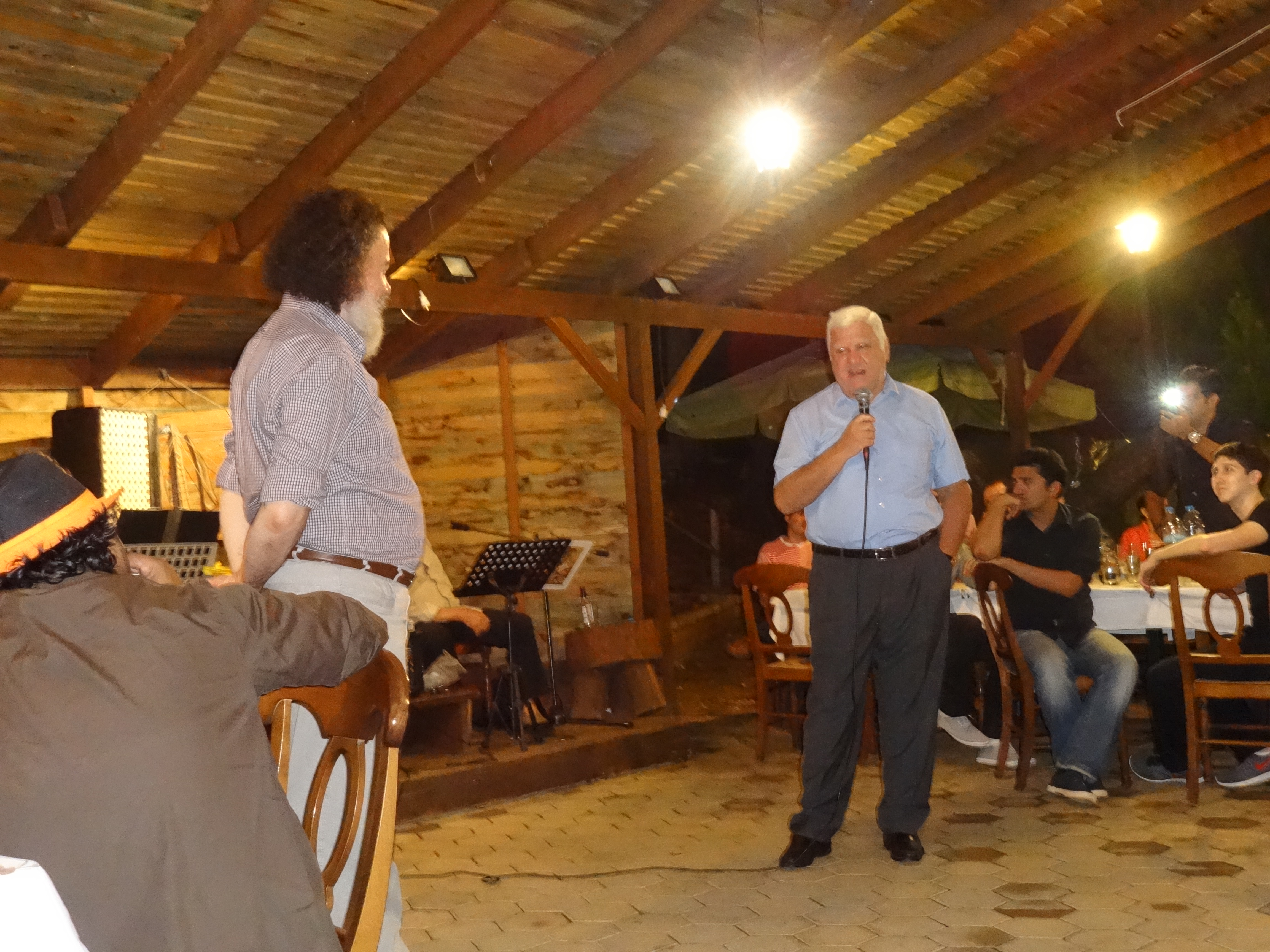
Additionally, it is important to highlight the significant role of George
Lazarides in the success of the Corfu scientific meetings (Schols and
Workshops). For four decades, until the onset of his illness three years
ago, George was one of the most active participants in the Corfu
scientific activities. As a talanted speaker, contributed in the most
significant manner to the education of doctoral and postdoctoral
researchers who attended the Corfu Schools for decades, serving as a
lecturer, a keynote speaker at the Corfu Workshops, and an outreach
instructor for high school teachers, students, and the general public
through courses, seminars, television, and radio discussions.
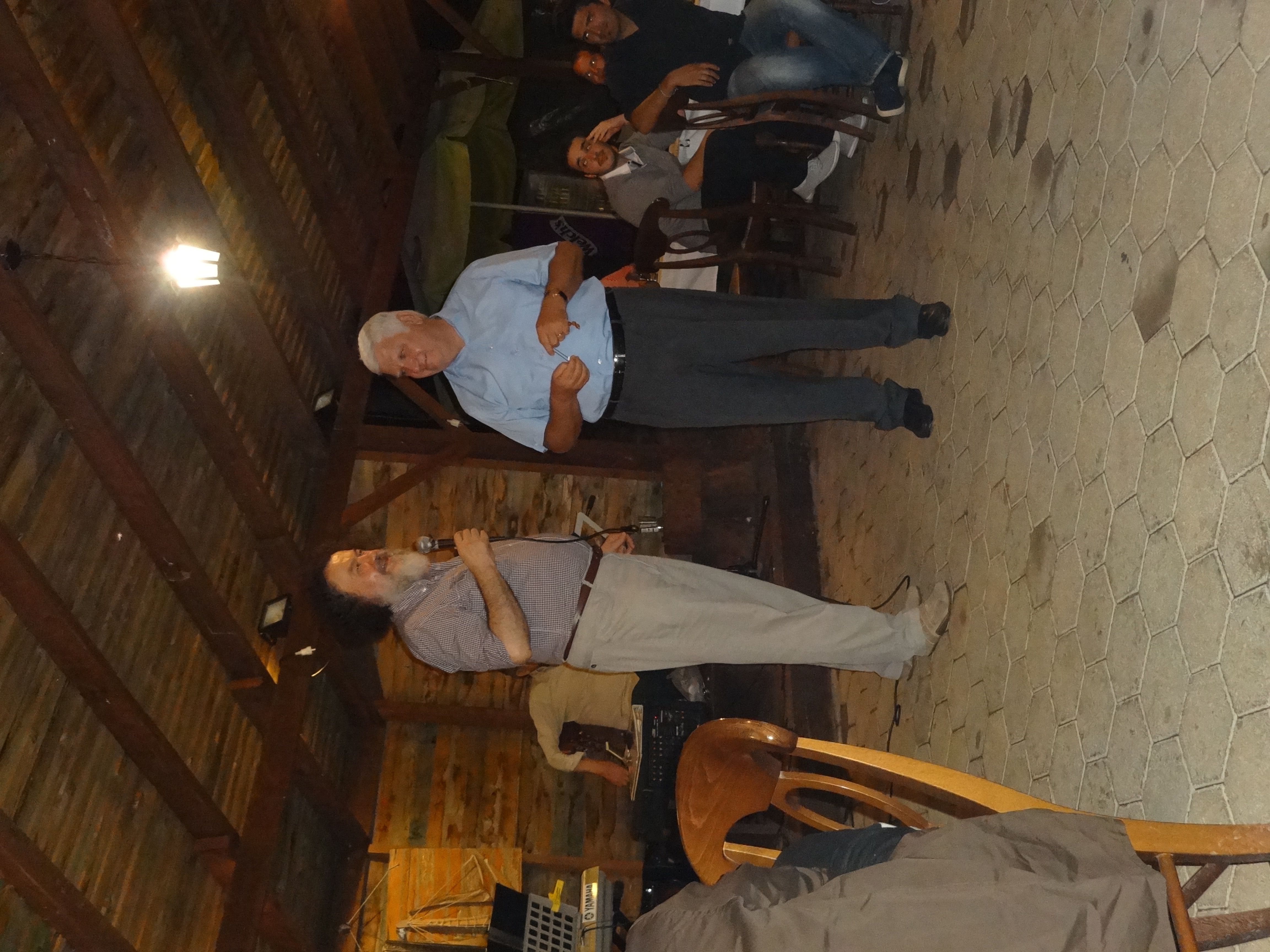
Beyond his remarkable scientific achievements and profound intellect, George was known for his warm, simple and approachable personality, embracing life and informal discussions. Interacting with such a unique individual was genuinely cherished by his numerous friends. George possessed a vast education encompassing various subjects beyond physics and mathematics, particularly in history, literature, and philosophy.
The memory of George Lazarides will forever be cherished by his family, close friends, and all who had the privilege of knowing him.
We would like to express our deepest heartfelt condolences to George's family and assure them that his memory will endure eternally within our hearts.
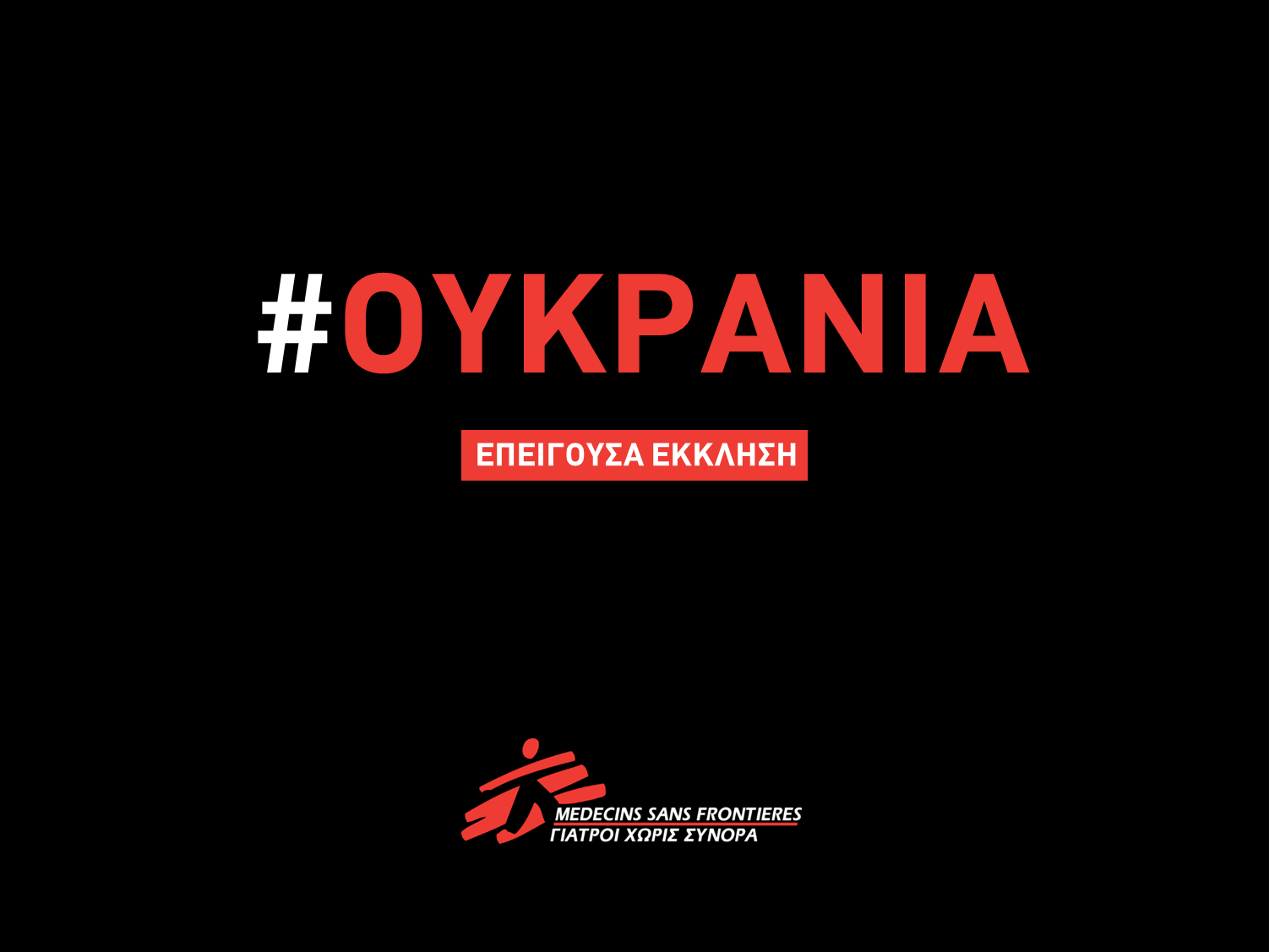 March 7, 2022:
For more than ten days, we have been witnessing the awful tragedy that the Ukrainian people are facing after the invasion of the Russian troops.
March 7, 2022:
For more than ten days, we have been witnessing the awful tragedy that the Ukrainian people are facing after the invasion of the Russian troops.
We all want the war to stop, the Russian troops to withdraw, and essential negotiations to start immediately. Meanwhile, though, the humanitarian drama in Ukraine is a fact and continues. Therefore in parallel to other actions to help the Ukrainian people, which we fully support, EISA (http://www.eisa.institute) took the initiative to contact the MEDECINS SANS FRONTIERES (MSF) and tries to coordinate with them any possible help we can provide to the suffering Ukrainian people. MSF’s urgent response was to produce an Emergency Fund, allowing them to act quickly in emergencies, especially in armed attacks like Ukraine.
EISA finds very encouraging the "Open letter of Russian Scientists participating in CERN experiments", the CERN Directorate, and the CERN Staff Association actions concerning the Ukrainian crisis, as we do (see also here). We believe it is our duty, as scientists, to keep the international scientific community united against the wars and continue our scientific collaborations without borders and urge for global peace. Medecins Sans Frontieres are constantly evaluating the needs, and they are on the lookout to escalate their actions where there is a need. That is why they need our support. You can support them here: NATIONAL BANK OF GREECE: IBAN GR36 0110 0800 0000 0804 8084 795 SWIFT CODE: ETHNGRAA ALPHA BANK: IBAN GR09 0140 1040 1040 0278 6014 420 SWIFT CODE: CRBAGRAAXXX. PIRAEUS BANK: IBAN GR96 0172 0110 0050 1101 3626 464 SWIFT CODE: PIRBGRAA EFG EUROBANK: IBAN GR50 0260 2150 0004 1010 0065 050 SWIFT CODE: EFGBGRAA The page msf.gr/epeigon (in Greek) offers alternative payment methods, using a credit card or PayPal.
Please make sure you mention MSF-EISA for Ukraine. You can forward the transfer receipt and the person’s details to be issued the donation receipt here: eleni.agapiou@athens.msf.org.
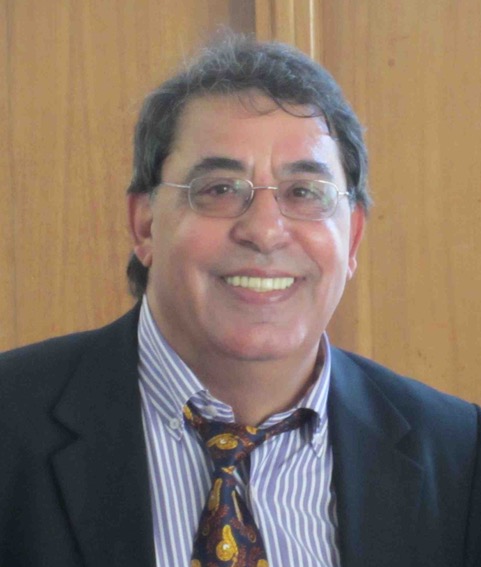 January 21, 2022:
We are deeply shocked by the terrible news that our beloved friend Costas Kounnas is not with us anymore. Costas Kounnas was an outstanding scientific personality with pioneer works in a diversity of areas that cover large areas of theoretical physics. Costas has made outstanding contributions in the fields of theoretical particle physics, quantum field theory, supergravity theory, superstring theory, and string cosmology. Due to his impressive in quality, depth, and physical understanding scientific publications, Costas was recognized internationally as one of the most respected theoretical physicists of his generation.
January 21, 2022:
We are deeply shocked by the terrible news that our beloved friend Costas Kounnas is not with us anymore. Costas Kounnas was an outstanding scientific personality with pioneer works in a diversity of areas that cover large areas of theoretical physics. Costas has made outstanding contributions in the fields of theoretical particle physics, quantum field theory, supergravity theory, superstring theory, and string cosmology. Due to his impressive in quality, depth, and physical understanding scientific publications, Costas was recognized internationally as one of the most respected theoretical physicists of his generation.
Costas was born on January 23, 1952 in Famagusta of Cyprus. After his academic studies in Athens and his DEA on Theoretical Physics in Paris, Costas worked on his thesis on Physics of Strong Interactions under the guidance of John Iliopoulos at the Laboratory of Theoretical Physics of the Ecole Normale Superieure (ENS) in Paris. After two years at the Center of Theoretical Physics of Ecole Polytechnique, in 1980 he was admitted to the CNRS. Then Costas left for a postdoctoral fellowship at CERN and afterwards at the University of California at Berkeley. In 1987 he returned to ENS as directeur de recherche of the CNRS. The period 1992 - 1999 Costas became a staff member at CERN in Geneva. Costas Kounnas was a brilliant physicist with fundamental breakthroughs in a wide spectrum of areas such as:
* Supergravity theories
Costas Kounnas has been instrumental in the development of supergravity theories, both in revealing their basic properties in the early days of supergravity, and in their appearance and importance in string theory. Thus, in 1983, together with E. Cremmer, S. Ferrara, and D. Nanopoulos discovered that N = 1 supergravity theory with a certain symmetry structure can explain in a natural way the vanishing or smallness of the cosmological constant. The relative smallness of the cosmological constant compared to the Planck mass can be preserved even after supersymmetry breaking, as was also found in this classical work. This work then also led to the discovery and the development of the N = 1 supersymmetric no-scale supergravity theories in 1984 by J. Ellis, C. Kounnas and D. Nanopoulos. Furthermore, Costas Kounnas together with E. Cremmer, J. Derendinger, S. Ferrara, L. Girardello, A. Van Proeyen and B. de Wit were the first to derive the supersymmetric effect of N = 2 supergravity with spin 1 gauge fields in 1985. This work was, among others, also important for the discovery of the Seiberg-Witten theory in the year. In 1989 Costas Kounnas wrote a very important and well-known paper on spontaneous breaking of supersymmetry in supergravity theories. This work forms today the basis for the further consideration of broken supersymmetry and the associated particle spectrum in these theories. Finally, Costas Kounnas has made decisive contributions to the derivation of the effective four-dimensional theory of supergravity from the compactifications of the superstring theory from ten to four space-time.
* Four-dimensional string theories
Costas Kounnas is one of the pioneers in the field of four-dimensional string theories. Together with I. Antoniadis and C. Bachas in 1987 wrote one of the most important and pioneering papers, namely the construction of four-dimensional string theories by means of conformal field theories consisting of 2-dimensional, world-space fermions. This work together with a couple of others have been crucial in the understanding of four-dimensional string theories, since they have shown that one can formulate string theories in four dimensions even without the geometric concept of compactification. It is also of very great phenomenological importance and therefore it was the starting point of much further work in string theory. Costas Kounnas was actively contributing to the further development of phenomenologically realistic four-dimensional string constructions with three families of quarks and leptons.
* Renormalization in string theory
Costas Kounnas was one of the first to show how to derive field theory renormalization from exact calculations of loop diagrams in string theory. In particular, together with J. Derendinger, S. Ferrara, and F. Zwirner, he was able to show in 1991 a very important connection between string loop calculations and anomalies in effective supergravity theory, which were of great importance for the further understanding of effective supergravity theory and also solved a previously misunderstood problem of the embedding of duality symmetries in effective string action. In a very original and important work from 1995, together with E. Kiritsis, Costas Kounnas was the first to show that infrared divergences in string theory correspond to ultraviolet divergences in effective field theory and allow the derivation of the renormalization group equation and the β-function of the effective coupling. In 1991, together with S. Ferrara, D. Lüst, and F. Zwirner, he also showed a very elegant way to compute the duality invariant partition functions and threshold corrections for gauge and gravitational string couplings due to heavy string states, and how these corrections are related to automorphic functions.
* Flux compactifications
String compactifications with so-called background fluxes have been a very active area of research in string theory in recent years, both in terms of mathematical understanding of the theory and phenomenological applications. In this area, Costas Kounnas, together with J. Derendinger, M. Petropoulos, and F. Zwirner, wrote in 2005 a very important and well-known paper, in which they were able to derive for the first time the effective potential of type IIA compactifications and further showed that this potential admits stable vacuum solutions in which all moduli parameters of the geometric space are given fixed values. The field of flux compactifications has been significantly developed and influenced further important work by Costas Kounnas and other researchers. The relation between flux compactifications and D-brane configurations for type II AdS vacua was worked out in a well-known paper by Costas Kounnas together with D. Lüst, M.Petropoulos, and D. Tsimpis in the year 2007.
* Strings at finite temperature and string cosmology
Costas Kounnas is one of the world's leading figures in the field of string cosmology. In 1992 he showed together with D. Lüst how cosmological string backgrounds can be derived from conformal field theory and Wess-Zumino-Witten models. String cosmology was also the main research area of Costas Kounnas in recent years. He has written some very important papers that have given, for the first time in string theory, an insight into the earliest evolutionary stage of the universe during and shortly after the Big Bang. In particular, Costas Kounnas has explicitly shown that string theory allows mathematically consistent solutions in which the universe first contracts during a so-called pre-big-bang phase and then expands again after the supposed big bang up to the present day. These new string-theoretical results are particularly interesting and important because they go much further than the classical cosmology. As the work of Costas Kounnas has shown, the space-time singularity of the Big Bang can be resolved in string theory so that the string theoretical equations of the early universe are mathematically well defined.
The starting point of Costas Kounnas research in string cosmology are works from 1991 and 1992, in which for the first time mathematically consistent string theories at finite temperature were constructed and for the first time a non-trivial conformal field theory was constructed, which allows an interpretation of an expanding and a contracting universe, respectively. An important breakthrough was then a work from 2002, in which it was demonstrated that one could circumvent the initial singularity of general relativity in string theory. In recent years, Costas Kounnas, together with his collaborators and Ph.D. students, has significantly advanced the field of string cosmology and the description of strings at finite temperature and has continuously obtained numerous important and new results, which have made him a world expert in this fundamentally important area of mathematical and theoretical physics.
In 2013 Prof. Kounnas received the prestigious research award of the Alexander-Humboldt-Foundation hosted by Dieter Lüst from the Ludwig-Maximilians-Universität in München.
During his stay in München, he wrote in 2014 an important paper together with D. Lüst about string theoretic inflation due to higher curvature corrections in the effective action. This work was followed in 2015 by a very well-recognized paper together with L. Alvarez-Gaume, A. Kehagias, D. Lüst, and A. Riotto about some basic properties of quadratic gravity.
The above and many other results of his research, which cannot be discussed in detail here, show unambiguously that Costas Kounnas was one of the best known and most outstanding theoretical elementary particle physicists. The results associated with his name are long-lasting contributions to various subfields of high energy physics and the adjacent fields of theoretical and mathematical physics. In particular, his work has made a long-lasting contribution to the fields of supergravity and superstring theory.
Costas has also worked very hard at the Ecole Normale to develop the scientific postgraduate education. Some of his doctoral students have also successfully embarked on a successful scientific career.
Last but not least, Costas Kounnas was deeply involved in establishing and developing the Corfu scientific meetings. This is an activity that started in 1982 in which Costas participated as a lecturer. In the subsequent years Costas was involved as a lecturer in the Schools, main speaker in the Conferences, and co-organizer of the various scientific events in Corfu. This is another pioneer scientific activity of Costas in which he was indeed dedicated for around 40 years. He was able to attract to Corfu the best physicists internationally. The Corfu Institute (European Institute for Science and Applications-EISA) will forever remember Costas’s tremendous efforts and successes to become the Corfu scientific meetings that we know from very long ago till nowadays.
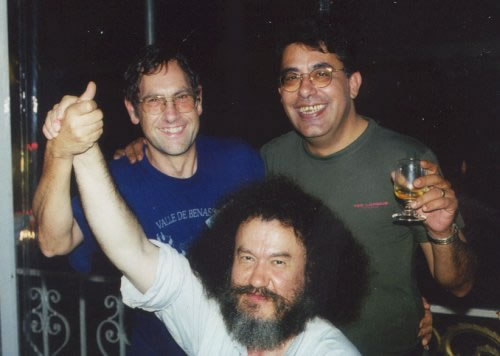 Costas, with his unique personality, had many close friends. We all mourn Costa's loss, and we will remember deeply in our hearts his generous friendship for which we are proud and honoured. The international scientific community lost a great scientist!
Costas, with his unique personality, had many close friends. We all mourn Costa's loss, and we will remember deeply in our hearts his generous friendship for which we are proud and honoured. The international scientific community lost a great scientist!
We would like to express our deepest condolences to his family.
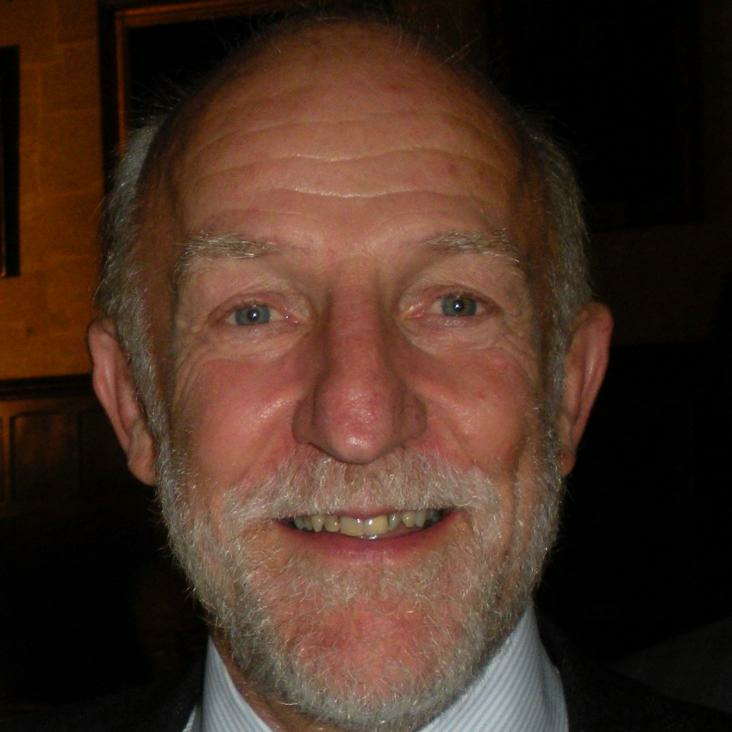 November 1, 2021:
We were shocked to learn about the passing of Graham Ross from a sudden heart attack, a close friend and a lifelong, strong supporter of EISA and its activities.
Graham was a close friend to many of us, a brilliant physicist who made many fundamental breakthroughs, a highly respected colleague and a wonderful man.
November 1, 2021:
We were shocked to learn about the passing of Graham Ross from a sudden heart attack, a close friend and a lifelong, strong supporter of EISA and its activities.
Graham was a close friend to many of us, a brilliant physicist who made many fundamental breakthroughs, a highly respected colleague and a wonderful man.
He was a Scottish theoretical physicist and Emeritus Professor of Physics at the University of Oxford and Emeritus Fellow of Wadham College. After his BSc from University of Aberdeen in 1966 and his D.Phil from University of Durham in 1969, Graham spent time at Caltech, CERN and the Rutherford Laboratory, before returning to the University of Oxford where he became a Professor of Physics. Graham was a truly great theoretical particle physicist who did pioneering work on QCD, Grand Unified Theories, Supersymmetry, Cosmology and many other areas. He was a wonderful man, much loved by those fortunate enough to know him, with a lively sense of humour and an abundance of creativity in his physics. Graham touched the lives of his many students, collaborators, colleagues and friends with his warm sense of humour and deep humanity . He was elected a Fellow of the Royal Society (FRS) in 1991, and in 2012 he was awarded the Dirac Medal by the Institute of Physics for his theoretical work in developing both the Standard Model of fundamental particles and forces and theories beyond the Standard Model.
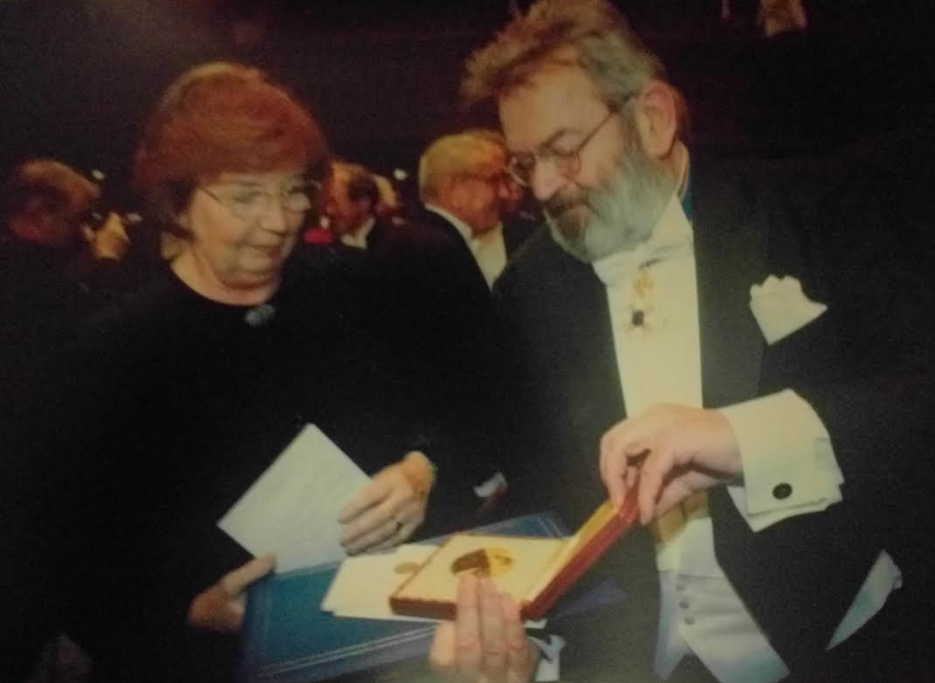 January 4, 2021: We are deeply shocked by the terrible news of the loss Tini Veltman, communicated to us the day after his passing by his wife Anneke and daughter Helene.
With the passing of Tini Veltman, the whole Particle Physics community has lost one of the founding fathers of our discipline. We have lost one of the fathers of the Corfu Institute (EISA), who with their presence and
contributions have established its international reputation from the very early days. Tini was always close to us with his wise advise, a great help during difficult times and sharing with us the happy days.
We are honoured and proud by Tini's friendship.
January 4, 2021: We are deeply shocked by the terrible news of the loss Tini Veltman, communicated to us the day after his passing by his wife Anneke and daughter Helene.
With the passing of Tini Veltman, the whole Particle Physics community has lost one of the founding fathers of our discipline. We have lost one of the fathers of the Corfu Institute (EISA), who with their presence and
contributions have established its international reputation from the very early days. Tini was always close to us with his wise advise, a great help during difficult times and sharing with us the happy days.
We are honoured and proud by Tini's friendship.
We present some biographical notes below, few of them taken from the Nobel Prize, Nikhef and Lindau Nobel Laureate Meetings Web pages.
Martinus (Tini) Veltman was born in Waalwijk, in 1931, the fourth of six children. His father was a primary school headmaster and placed a great emphasis on education, but during WWII the invading German army took over the school to billet soldiers – lessons were improvised, sometimes taking place in a stable. Veltman graduated from high school in 1948, and went on to university at Utrecht, but with the staff decimated by war he found lessons dull. After five years (2 years longer than normal) he passed the candidaats exam. It was only then that he came across a book on Einstein’s theory of relativity, which belatedly inspired him. He returned to his studies with renewed vigour, breaking only for military service from 1958–59. His main studies were at Utrecht under Leon Van Hove, but to develop his interest in particle physics, Veltman took extra courses in Naples and Edinburgh.
In 1960, Van Hove became director of the theory division at CERN, the European High Energy laboratory in Geneva, Switzerland. Veltman followed him in 1961, where he calculated Coulomb corrections for the CERN neutrino experiment as part of his PhD thesis, which he completed in 1963. Veltman continued to work on calculations for the neutrino experiment, and began writing a computer program to perform the lengthy number-crunching. In 1966, Veltman succeeded Van Hove as professor of physics at Utrecht, and it was there in 1969 that he teamed up with student Gerard ‘t Hooft.
It was at Utrecht that Veltman carried out his Nobel-prize-winning work. In the 1960s, Sheldon Glashow, Adbus Salam and Steven Weinberg unified the weak and electromagnetic interaction and predicted the existence of the W and Z bosons, which carry the electroweak force. This became known as the Weinberg-Salam theory and for their efforts the trio were awarded the 1979 Nobel Prize of Physics. Yet their theory had to be “renormalized” – in other words, the infinities in the theory needed to be removed — before it could predict the physical properties of these particles, such as their masses.
By analyzing what was known at the time as current algebra, Veltman made it clear that in theory the spin-1 particles had to comply with a Yang-Mills structure. In order to be able to perform a renormalization program like QED, he looked at alternative Feynman rules with unphysical scalar particles, so-called ghosts. On that basis Veltman was able to prove renormalization of the electro-weak theory to 1-loop. Finally, Gerard ‘t-Hooft proved that renormalization to all orders is possible if a new physical particle is introduced. A particle that is now known under the name Brout-Englert-Higgs-boson, discovered at CERN in 2012 and since Brout had passed away one year earlier, François Englert and Peter Higgs were awarded the 2013 Nobel Prize of Physics.
The breakthrough of Tini Veltman and Gerard ‘t-Hooft, one of the great moments in twentieth century physics, was finally awarded a Nobel Prize in Physics in 1999 “for elucidating the quantum structure of electroweak interactions in physics.”
In 1980, Veltman spent a sabbatical year at the University of Michigan. He remained, promoted to the MacArthur chair, until he retired in 1997 and returned to the town of Bilthoven in the Netherlands with his wife Anneke (they married in 1960 and have three children). Asteroid 9492 Veltman is named in his honour.
We would like to join the sorrow of the whole particle physics community for the loss of Martinus Veltman. The memory of Tini Veltman will stay forever with us. We would like to express our deepest condolences to his family and in particular to his wife Anneke and daughter Helene.
 December 12, 2020: With deep saddness we are informed about the passing away of Jack Steinberger, a giant of Particle Physics, a great man with social
concern,a dreamer of the international peace. We are very proud and honoured by the fact that Jack Steinberger was a constant friend and supporter of the Corfu scientific activities, in which he
contributed in a very substantial way.
December 12, 2020: With deep saddness we are informed about the passing away of Jack Steinberger, a giant of Particle Physics, a great man with social
concern,a dreamer of the international peace. We are very proud and honoured by the fact that Jack Steinberger was a constant friend and supporter of the Corfu scientific activities, in which he
contributed in a very substantial way.
On the scientific side let our colleagues from CERN talk about Jack Steinberger:
Jack Steinberger, born in the Bavarian town of Bad Kissingen on May 25, 1921, left Germany at the age of 13 to escape rising antisemitism and settled in the United States. He got a degree in chemistry from the U. Chicago and he turned inti physics working under tha guidance of Enrico Fermi investigating cosmic rays. His work on neutrino physics got him the 1988 Nobel Prize in Physics, shared with Melvin Schwartz and Leon Lederman, for their 1962 discovery of the muon neutrino at Brookhaven National Laboratory.
In 1968, Jack joined CERN to work on CP violation experiments. In the 1970s, he went on to become a founding member of the CERN-Dortmund-Heidelberg-Saclay (CDHS) collaboration, which was later joined by a group from Warsaw and conducted neutrino scattering experiments in the West Experimental Area. Running from 1976 to 1984, CDHS produced a string of important results using neutrino beams to probe the structure of protons and neutrons. When the Large Electron-Positron Collider (LEP) was first proposed, a core group from CDHS joined with physicists from other institutions to develop a detector for CERN’s new flagship facility. This initiative grew into the ALEPH experiment, and Jack, with his great scientific curiosity and remarkable rigour, was the natural choice to become its first spokesperson in 1980, a position he held until 1990. The detector as a whole benefited from Jack’s charismatic leadership and clarity of mind. From the outset, he stipulated that standard solutions should be adopted across the whole detector as far as possible. Jack was also insistent that all solutions considered for the detector first had to be completely understood. As the LEP era got underway, this level of discipline paid dividends and was reflected in the results. In retirement, Jack continued to be a regular presence at CERN, contributing to the intellectual life of the Laboratory until well into his 90s, notably by returning to his interest in CP violation as an adviser to the NA31, NA48 and NA62 experiments.
Quoting Mikhail Shifman: "...Jack Steinberger was born in Germany from which his family managed to flee after Hitler's rise to power. His father was a cantor and religious teacher. Through his career as an experimental particle physicist, he held positions at the University of California, Berkeley, Columbia University (1950–68), and then CERN (1968–86). He was also a recipient of the United States National Medal of Science in 1988, and the Matteucci Medal from the Italian Academy of Sciences in 1990... In 1949, Jack Steinberger, then a graduate student, calculated in his PhD a Feynman graph for two-photon decay of neutral pion in the pion-nucleon theory (the only one known in this time and suitable for this process). With the γ5 vertex his result was in excellent agreement with experiment. However, with γμ γ5 vertex it failed. As we know now, the failure was due to the chiral anomaly. Frustrated with this puzzle Steinberger left theory and switched to experiment, in which he managed to ascend to the very top..."
Even better, let Jack Steinberger tell us his life story in his autobiography in the Nobel Prize Committee pages.
From our side we would like to add, to so many others, our deep sorrow of the loss of such a great personality. The memory of Jack Steinberger will stay forever with us. We would like to express our deepest condolences to his family.
 August 12, 2020: We are deeply shocked by the terrible news of the loss of John Madore, who passed away on August 12 mostly from the side effects of Parkinson
disease, which he fought bravely with huge courage and humor for several years. John Madore was a beloved friend of several colleagues, being a unique
personality, a dedicated academic researcher, friendly to everybody, ready to discuss a huge range of subjects and very open to scientific collaborations.
August 12, 2020: We are deeply shocked by the terrible news of the loss of John Madore, who passed away on August 12 mostly from the side effects of Parkinson
disease, which he fought bravely with huge courage and humor for several years. John Madore was a beloved friend of several colleagues, being a unique
personality, a dedicated academic researcher, friendly to everybody, ready to discuss a huge range of subjects and very open to scientific collaborations.
John Madore was born in Saskatchewan of Canada on 17th June 1938. John started his university studies at the University of Toronto and then he continued in Hamburg for a couple of years before going to France, where he spent most of his academic life as CNRS researcher at Paris University XI, Orsay.
John and Geneviève Madore were married in 1970, few years after John's arrival in France and they have a son, David, who is mathematician. They were a very nice family till the end.
Among the first scientists whom John met in Paris were Lucette Defrise and her husband Brandon Carter and they established a long friendship. Richard Kerner recalls the common first steps in France with John (John arrived in 1967 and Richard in 1968, a year later): "We almost immediately started to discuss about General Relativity, Field Theory, etc. These were the times when we used to meet with Achille Papapetrou, André Lichnerowicz, Yvonne Choquet-Bruhat, Marie-Antoinette Tonnelat, Lluis Bel and many other French and foreign Relativists. There were at least two regular seminars where we used to meet...".
Achille Papapetrou was John Madore's doctor thesis advisor on General Relativity. A couple of characteristic papers of that period are: Commun. Math. Phys. 27 (1972) 291, Commun. Math. Phys. 30 (1973) 335. Nathalie Deruelle is another collaborator and close friend of John, and she co-authored at least three nice gravitation papers with him in the eighties. A more recent one is the gr-qc/0305004.
John wrote some interesting papers on Elementary Particle Physics and in particular he studied Yang Mills theories and classical solutions. Some representative ones are the following: Commun. Math. Phys. 56 (1977) 115, Gen. Rel. Grav. 8 (1977) 655, Phys. Rev. D 15 (1977) 514, Phys. Rev. D 18 (1978) 2788, Phys. Rev. D 17 (1978) 562. John also wrote very interesting papers on geometrical methods in field theory, mathematical physics, cosmology and Kaluza-Klein Theory, such as: Phys. Rept. 49 (1979) 113, Phys. Rept. 75 (1981) 125.
In 1988 John started publishing on noncommutative geometry. John's very fruitful collaboration with Michel Dubois-Violette and Richard Kerner resulted to some pioneering papers on noncommutativity: Phys.Lett. B217 (1989) 485, Class. Quant. Grav. 6 (1989) 1709, J. Math. Phys. 31 (1990) 316, J. Math. Phys. 31 (1991) 323.
Then John wrote the paper on the Fuzzy Sphere, which made him famous in a very wide scientific audience: Class. Quant. Grav. 9 (1992) 69. Harald Grosse, another leading figure in the field of Noncommutativity, recalls: "My personal interaction with John started in 1992. I learned about the Fuzzy sphere (after a talk in Orsay) and I was fascinated to use noncommutativity as a regulator for QFT and within a short time we published together the paper: Phys.Lett. B283 (1992) 218".
Another cornerstone in the subsequent development of the field of Noncommutativity and the basis that inspired John's new collaborations was the publication of his book: An Introduction to Noncommutative Differential Geometry and its Physical Applications (London Mathematical Society Lecture Note Series) Cambridge University Press, 1995
During the next years, John became the leading senior advisor in the large group of Julius Wess working on Noncommutativity in Munich (LMU and MPI). Numerous new friends and collaborations emerged during the next years and John was the main speaker in all the Workshops, Conferences and Schools on Noncommutativity. An excellent paper written in that period, which attracted in the field also several scientists from the particle physics community, is the Eur.Phys.J. C16 (2000) 161.
Being the central figure of the scientific activity in the field of Noncommutativity certainly was not limited to Paris or Munich. John was traveling everywhere, to Toronto, Potsdam, London, Cambridge, USA, Bologna, Athens, Corfu, Vienna, Prague, Belgrade, India ..., building new collaborations, making new friends and teaching young scientists the emerging new scientific field.
It is hard to refer to all of John's publications after this period in detail. John wrote more than 128 scientific papers that were cited several thousand times (his book only is cited more than 900 times). It is fair to mention also his other collaborators (here in alphabetic order): Aschieri Paolo, Buric Maja, Cerchiai Bianca Letizia, Cho S, Chu Chong-Sun, Deruelle Nathalie, Dimakis Aristophanes, Douzas George, Dubois-Violette Michel, Duff Michael,Fiore Gaetano, Georgelin Yves, Grammatikopoulos Theodore, Grosse Harald, Forrester Peter , Heller Michal, Hinterding R, Jancovici Bernard, Kastler Daniel, Kehagias Alexandros, Kerner Richard, Lambert D, Landi Giovanni, Maceda Marco, Manousselis Pantelis, Masson Thierry, Mourad Jihad, Nenadovic Luka, Park K S, Richard Jean-Louis, Robinson David, Saeger Luiz Augusto, Schraml Stefan, Schupp Peter, Sitarz Andrzej, Steinacker Harold, Stora Raymond Felix, Wess Julius, Zoupanos George. His collaboration with our friend Maja Buric stands out, because it was the reason for several other scientists to start working in the field.
In short, John Madore was a great scientist and an excellent personality and all his friends, collaborators and students will remember him forever with great respect and love!
The Corfu Institute (EISA) has benefited a lot! by John's scientific contributions in its scientific meetings and will dedicate the next Workshop on Noncommutativity to honour his memory. Close collaborators of John, like Gaetano Fiore, Harold Steinacker, Andrzej Sitarz, Bianca Cerchiai, Paolo Aschieri, Aristophanes Dimakis, Peter Schupp, George Zoupanos, students as Jihad Mourad, Marco Maceda who were not mentioned specifically here, but who have a lot to say about John, and many others with whom John was discussing for years scientific issues which though did not lead to a common publication, will have the opportunity to talk about John Madore as scientist and person. Finally it might sound personal, but it is better to be added, that Geneviève Madore in her last mesage said: "When John was in the hospital in June, he told me that he wanted to go to Corfou once more... His trips to Corfou and Athens, the meetings with you and all his colleagues were so important and joyful for him !!!". All friends, collaborators and students of John are invited to contribute so that John Madore's memory stay for ever with us!
We would like to express our deepest, heartfelt condolences to John's family, and in particular to his wife Geneviève and his son David.
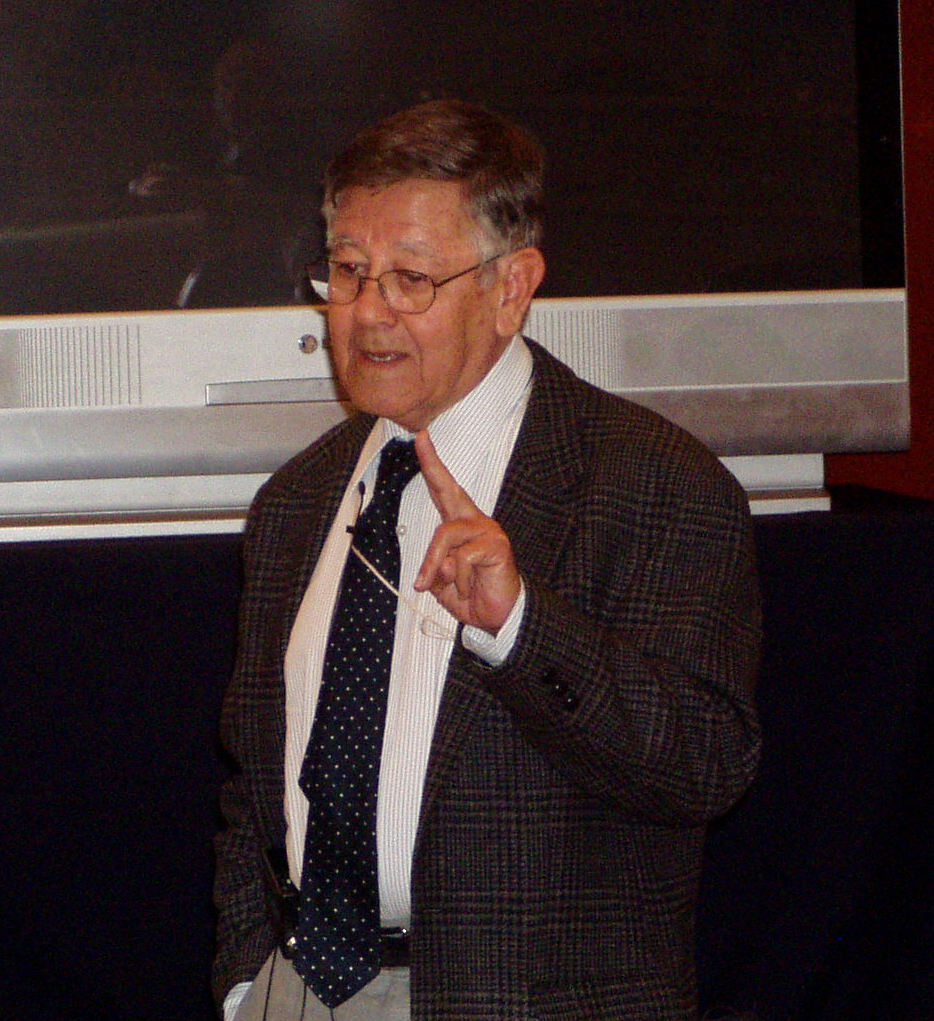 Jun 8, 2020: It is with great sorrow that we announce that our beloved friend Alfonso Mondragon has recently passed away. Alfonso was a great personality,
both scientifically and socially. In Corfu, we will always remember him as an excellent scientific speaker and an extremely sweet and kind
person in his personal contacts.
Jun 8, 2020: It is with great sorrow that we announce that our beloved friend Alfonso Mondragon has recently passed away. Alfonso was a great personality,
both scientifically and socially. In Corfu, we will always remember him as an excellent scientific speaker and an extremely sweet and kind
person in his personal contacts.
Prof. Alfonso Mondragón died on June 8, 2020. Born in 1932, he was a nuclear and mathematical physicist by training, who made important contributions in both fields. He was also a pioneer of particle physics in Mexico, where he became one of the first specialists in hadronic and flavour physics. He studied his first degree in Mexico at UNAM, under the supervision of Marcos Moshinsky. He then went on to do a Ph.D. to Birmingham University under the supervision of Sir Rudolf Peierls. He graduated in 1960 and became the seventh mexican physicist to hold a doctorate. He returned to Mexico in 1961 and worked uninterruptedly at the Instituto de Fisica (UNAM), almost until the end of his life. On his return to Mexico, he devoted a great amount of his time to train new generations of physicists, to strengthen and develop further the Faculty of Sciences and the postgraduate studies, and to open new fields of research. His interests in physics were very wide and ranged from very theoretical aspects, like non-Hermitian quantum mechanics, to patents in nuclear chemistry. He was instrumental in creating a particle physics group at the Instituto de Fisica at UNAM. His work was recognized internationally and he maintained personal and professional contacts to many colleagues world-wide. He was also a beloved and respected teacher, whose students can be found in many universities and physics institutes in Mexico. We would like to express our deepest, hearty condolences to Alfoso's family and assure them that his memory will stay for ever with us!
 Jun 1, 2020:
It is with great sadness that we received the terrible news that Roberto Peccei
has passed away.
Jun 1, 2020:
It is with great sadness that we received the terrible news that Roberto Peccei
has passed away.
Roberto was an outstanding physicist a charismatic figure of our community, and a source of inspiration for several generations of theoretical physicists. Roberto has had great influence on theoretical physics by creating some of the most successful research groups in the world, first at the Max Planck Institute in Munich, then at DESY, where he headed the Theory Group, and finally at the UCLA where he also held the position of Vice Chancellor for Research. Among his many contributions to theoretical physics, the most famous is the solution of the strong CP problem done together with Helen Quinn, for which they were awarded the Sakurai Prize in 2013.
Roberto participated in the early Corfu Meetings in the '80s as a lecturer. Roberto's presence in the early Corfu Schools and Workshops was of great importance for their success and in establishing them internationally. EISA mourns the passing of Roberto Peccei together with all his numerous friends, students and colleagues, while our thoughts are with his family and close friends to whom we would like to express our deepest condolences.
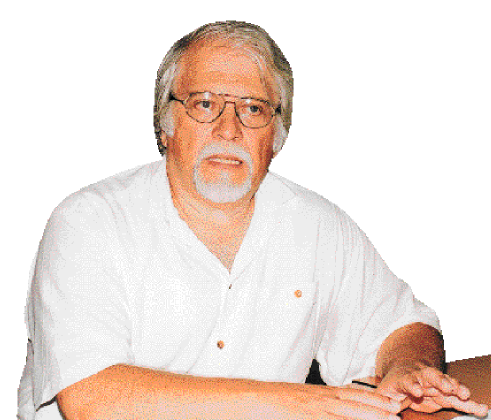 Feb 13, 2020:
We are deeply shocked by the terrible news of the unexpected loss of Nikos Antoniou, who passed away on Feb 13.
Nikos Antoniou was a beloved friend, a colleague and a teacher of many members of the Particle Physics Community of Greece. He was a unique personality, a dedicated academic, well known for his academic ethos, an excellent teacher and a brilliant public lecturer.
Feb 13, 2020:
We are deeply shocked by the terrible news of the unexpected loss of Nikos Antoniou, who passed away on Feb 13.
Nikos Antoniou was a beloved friend, a colleague and a teacher of many members of the Particle Physics Community of Greece. He was a unique personality, a dedicated academic, well known for his academic ethos, an excellent teacher and a brilliant public lecturer.
Nikos offered all of the above characteristics of his personality with great generosity to all the academic institutions that he has served: the NCSR Demokritos, the University of Athens and the University of Cyprus. He has has been an important part of the Corfu scientific activities since their beginning in 1981. Besides his scientific contributions, he was the one that, as the Director of NCSR Demokritos, managed to secure critical funding that made those meetings possible. And for that, we all at the EISA wish to express our gratitude. In addition, he contributed the outmost to the Greek Particle Physics Community during his terms as the Scientific Director of the NCSR Demokritos, as the President of the Greek Physical Society and as the representative of Greece to the CERN Council.
Nikos Antoniou did pioneering work in Quantum Chromodynamics at finite temperature and density. He was the first, worldwide, who suggested to look for imprints of fractal geometry in momentum space as a signature of the chiral critical point and connected it with finite size scaling. His ideas influenced significantly the search for the QCD critical point in NA49 and NA61 experiments at CERN.
We will always remember Nikos Antoniou as a wise and dedicated academic personality, with a very broad and deep knowledge extending far beyond his research interests, and as a sweet person ready to share his knowledge and experience generously with everyone close to him, especially with the young scientists.
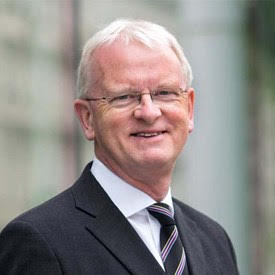 Nov 9, 2018:
We were shocked to receive the terrible news of the passing of Professor James Stirling. The physics community suffered the great loss of an outstanding scientist, and we, in particular, that of a longtime great friend and supporter. Professor Stirling was one of the star physicists of the Institute for Particle Physics Phenomenology in Durham and its inaugural director as well as the Jacksonian Professor of Natural Philosophy and Head of the Cavendish Laboratory at the University of Cambridge. He served as the first Provost of the Imperial College in London from 2013-2018. He made crucial contributions in high energy phenomenology, especially in hadronic physics and perturbative QCD, and some of his works are among the most cited of all times in the physical sciences. The Corfu Summer Institute and the European Institute for Sciences and their Applications would like to express their gratitude for Professor's Stirling strong support during all these years, and especially at their first steps in 2003. Our thoughts are with his family and close friends to whom we would like to express our deepest condolences.
Nov 9, 2018:
We were shocked to receive the terrible news of the passing of Professor James Stirling. The physics community suffered the great loss of an outstanding scientist, and we, in particular, that of a longtime great friend and supporter. Professor Stirling was one of the star physicists of the Institute for Particle Physics Phenomenology in Durham and its inaugural director as well as the Jacksonian Professor of Natural Philosophy and Head of the Cavendish Laboratory at the University of Cambridge. He served as the first Provost of the Imperial College in London from 2013-2018. He made crucial contributions in high energy phenomenology, especially in hadronic physics and perturbative QCD, and some of his works are among the most cited of all times in the physical sciences. The Corfu Summer Institute and the European Institute for Sciences and their Applications would like to express their gratitude for Professor's Stirling strong support during all these years, and especially at their first steps in 2003. Our thoughts are with his family and close friends to whom we would like to express our deepest condolences.
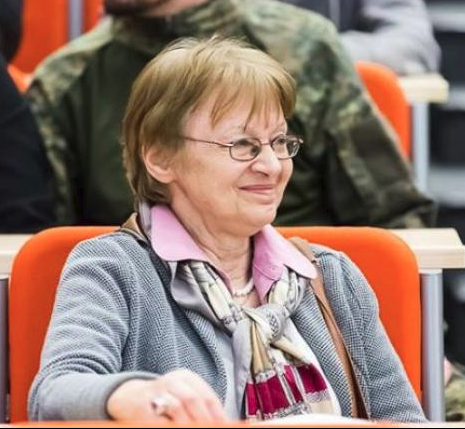 May 24, 2017:
We are really shocked by the terrible news of the unexpected loss of Maria Krawczyk, who passed away on May 24. Maria was an extraordinary person, a passionate scientist, and a great friend of Corfu community. With her research on the LHC, ILC and CLIC, she has contributed a lot to lively discussions during past Corfu meetings. Her enthusiasm for Higgs physics and photons was particularly very infectious. She will never be forgotten for her sweet personality, her generous and courteous character, for her enthusiasm in physics, and for her support of the young generation of physicists.
May 24, 2017:
We are really shocked by the terrible news of the unexpected loss of Maria Krawczyk, who passed away on May 24. Maria was an extraordinary person, a passionate scientist, and a great friend of Corfu community. With her research on the LHC, ILC and CLIC, she has contributed a lot to lively discussions during past Corfu meetings. Her enthusiasm for Higgs physics and photons was particularly very infectious. She will never be forgotten for her sweet personality, her generous and courteous character, for her enthusiasm in physics, and for her support of the young generation of physicists.
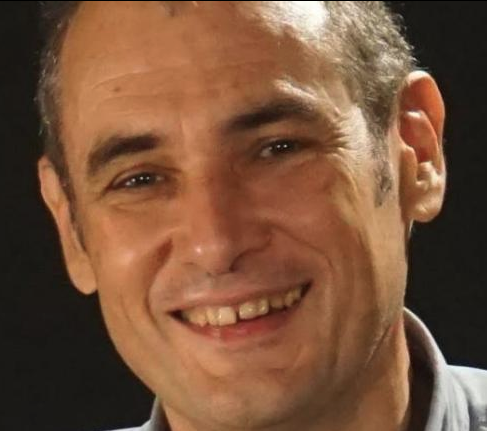 Apr 1, 2017:
We are deeply shocked by the news of the passing of Pierre Binetruy. Pierre was an outstanding scientific figure of our generation and a leading personality in our scientific community. Pierre was also a very good personal friend of many of us and a great supporter of the Corfu scientific activities, where he served as lecturer and main Workshop speaker.
Apr 1, 2017:
We are deeply shocked by the news of the passing of Pierre Binetruy. Pierre was an outstanding scientific figure of our generation and a leading personality in our scientific community. Pierre was also a very good personal friend of many of us and a great supporter of the Corfu scientific activities, where he served as lecturer and main Workshop speaker.
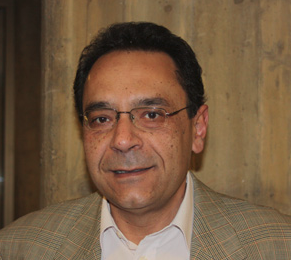 Aug 30, 2016:
Dear friends, I deeply regret to inform you that our beloved friend and colleague Giannis (Ioannis) Bakas passed away on Tuesday, Aug 30. Giannis was an outstanding mathematical physicist, a great academic teacher and a real gentleman and generous person. His scientific work and presence honored the Greek scientific community and we have all been devastated by his sudden loss. We have been informed by his family that the funeral will take place in his hometown Kalamata on Friday, Sep 2 at 5 pm. We express our deepest sympathy to the members of his family. The scientific community lost an excellent scientist and EISA lost its General Secretary, who was one of its main cornerstones. On behalf of the EISA, George Zoupanos.
Aug 30, 2016:
Dear friends, I deeply regret to inform you that our beloved friend and colleague Giannis (Ioannis) Bakas passed away on Tuesday, Aug 30. Giannis was an outstanding mathematical physicist, a great academic teacher and a real gentleman and generous person. His scientific work and presence honored the Greek scientific community and we have all been devastated by his sudden loss. We have been informed by his family that the funeral will take place in his hometown Kalamata on Friday, Sep 2 at 5 pm. We express our deepest sympathy to the members of his family. The scientific community lost an excellent scientist and EISA lost its General Secretary, who was one of its main cornerstones. On behalf of the EISA, George Zoupanos.
 EISA
EISA